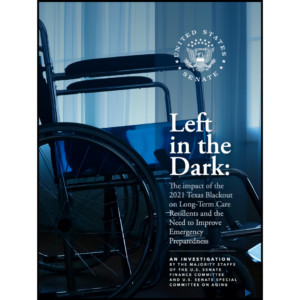Fire Safety and Prevention: Strategies to Protect Your Community Following Gabriel House Fire
On the evening of July 13th, a five-alarm fire broke out at Gabriel House, an assisted living facility in Massachusetts. Tragically, nine residents died that night, and a tenth resident, who was hospitalized in critical condition, passed away five days later.
The cause of the fire is still under investigation, but according to a CBS News source, investigators are exploring whether smoking near an oxygen tank may have sparked the blaze. Questions have also been raised about whether the building’s sprinkler system was functioning properly.
Massachusetts Governor, Maura Healey, announced a Fire and Life Safety Initiative to improve assisted living facility safety in the wake of the fire. Facilities will be required to send letters to residents and their families that outlines the facility’s fire safety protocols, evacuation procedures, and points of contact for questions. Facilities must also post evacuation instructions and exit routes inside each residential unit and in common areas. Additionally, facilities must complete and submit a fire safety assessment survey.
The incident is a stark reminder of the importance of fire safety procedures in senior living. Here, we explore fire safety and prevention strategies to help your community protect residents and respond effectively in emergencies.
Fire Risk Factors in Senior Care Communities

Ardra Reed, MPH, quality assurance manager at AHEPA Senior Living.
Because of their unique structure and operating model, senior care communities have inherent fire risks. Because many residents have mobility impairments, they often require more time to evacuate during emergencies and may rely on staff for assistance exiting the building. “Seniors with cognitive impairments may not respond appropriately to fire alarms or evacuation instructions,” says Ardra Reed, MPH, quality assurance manager at AHEPA Senior Living. These impairments can cause confusion, fear, and resistance during emergencies.
The community’s structure and policies can also influence fire risk. In communities facing staffing shortages, evacuation procedures may be compromised, particularly if staff are not on-site during certain hours.
Several other factors can pose fire risks and make evacuation challenging. Outdated building designs may hinder safe and efficient exits, while medical equipment can create physical obstacles or hazards during an evacuation.
Some fire risks in senior care communities are frequently overlooked. According to Reed, residents’ personal electrical equipment can be potential hazards, making it essential to monitor their condition and usage closely.
Key Elements to Include In a Fire Safety Program
Creating a fire safety program can help minimize fire risks and help ensure a fast and effective evacuation if a fire does occur. Reed encourages communities to perform regular risk assessment and fire safety planning, including identifying hazards and creating a customized fire safety and evacuation plan for the community.
Fire prevention measures are also key to fire safety. Routine electrical inspections can help detect hazards early, while no-smoking policies significantly reduce the risk of ignition. Regular room inspections also play a vital role in ensuring residents comply with established fire safety protocols.
Additionally, each community should have working smoke detectors and heat sensors, as well as fire suppression systems like automatic sprinkles and accessible fire extinguishers.

Sharon Furtado, director of administration at Piping Systems Ins.
Sharon Furtado, director of administration at Piping Systems Ins., recommends that communities review and update their fire programs and plans at least annually, or when there are significant changes to the resident population, staffing, or community layout. Regular resident assessments are essential to identify any changes in mobility or cognitive function. Communities should also review their plans whenever their fire safety systems are upgraded or modified, as well as after any fire incidents or near-misses.
“The local fire department’s fire prevention department should visit facilities on an annual basis to ensure they have proper plans and procedures in place,” says Furtado.
What Role Does Staff Play?
Staff-to-resident ratios play a critical role in evacuation efficiency. Communities that are understaffed or operating with only the minimum required personnel may struggle to carry out evacuations effectively. “Maintain adequate overnight staffing levels based on resident acuity,” Furtado suggests. She also notes that staff members should be cross trained in multiple roles so they can adapt as needed during emergencies.
In order to respond effectively in high-pressure emergencies, training is essential. Staff members should be familiar with the location and operation of all fire safety systems. Ongoing refresher courses and scenario-based drills can help prepare them for potential emergencies.
In an emergency, staff members must be able to make decisions under pressure and evacuate residents quickly and effectively. “Staff must know how to delegate tasks properly,” says Reed.
They also play a vital role in fire prevention. “Staff must follow through on property maintenance and inspections,” explains Reed. Maintenance and inspections are among the most effective ways to prevent fires entirely.
Staff Training for Fire Safety and Evacuations
Proper training prepares staff to respond confidently to an emergency, leading to quicker evacuations and heightened awareness of potential hazards.
Furtado recommends performing staff training initially when new staff are hired, as well as every quarter. “Training should cover evacuation procedures, fire safety equipment use, and resident assistance techniques,” she explains. “Make scenarios as realistic as possible, such as blocked exits, equipment failure, staff shortages and mobility challenges. Maintain detailed records of all trainings and drills and how each one performed so training can be revised to find deficiencies.”
Communities should also evaluate how they design and deliver staff training programs. Reed encourages communities to treat fire safety as a culture. “Change your mindset from ‘meeting code’ to ‘saving lives,’” she says.
Additional Fire Safety Precautions
Partnering with first responders can significantly strengthen a community’s fire preparedness. “Senior care communities should actively collaborate with local emergency responders, especially fire departments, ambulances, and police departments,” says Reed. “These partnerships save lives by improving coordination, response times, and situational awareness.”
Additionally, communities should consider investing in advanced fire detection systems, which can provide early warning and location-specific information, enabling staff and emergency responders to act more quickly and effectively.
While most communities conduct inspections to meet fire code requirements, it’s equally important to schedule regular assessments by qualified professionals. These evaluations can uncover potential risks that may be easily and promptly addressed.
“This tragic incident underscores the critical importance of comprehensive fire safety planning in senior care communities,” says Furtado. “The unique vulnerabilities of this population require specialized approaches that go beyond standard fire safety measures. Facilities must prioritize adequate staffing, rigorous training, and continuous improvement of their emergency preparedness to protect their most vulnerable residents.”

Paige Cerulli is a contributing writer to i Advance Senior Care.
Related Articles
Topics: Disaster Preparedness , Facility management , Featured Articles , Operations , Risk Management , Staffing , Training











